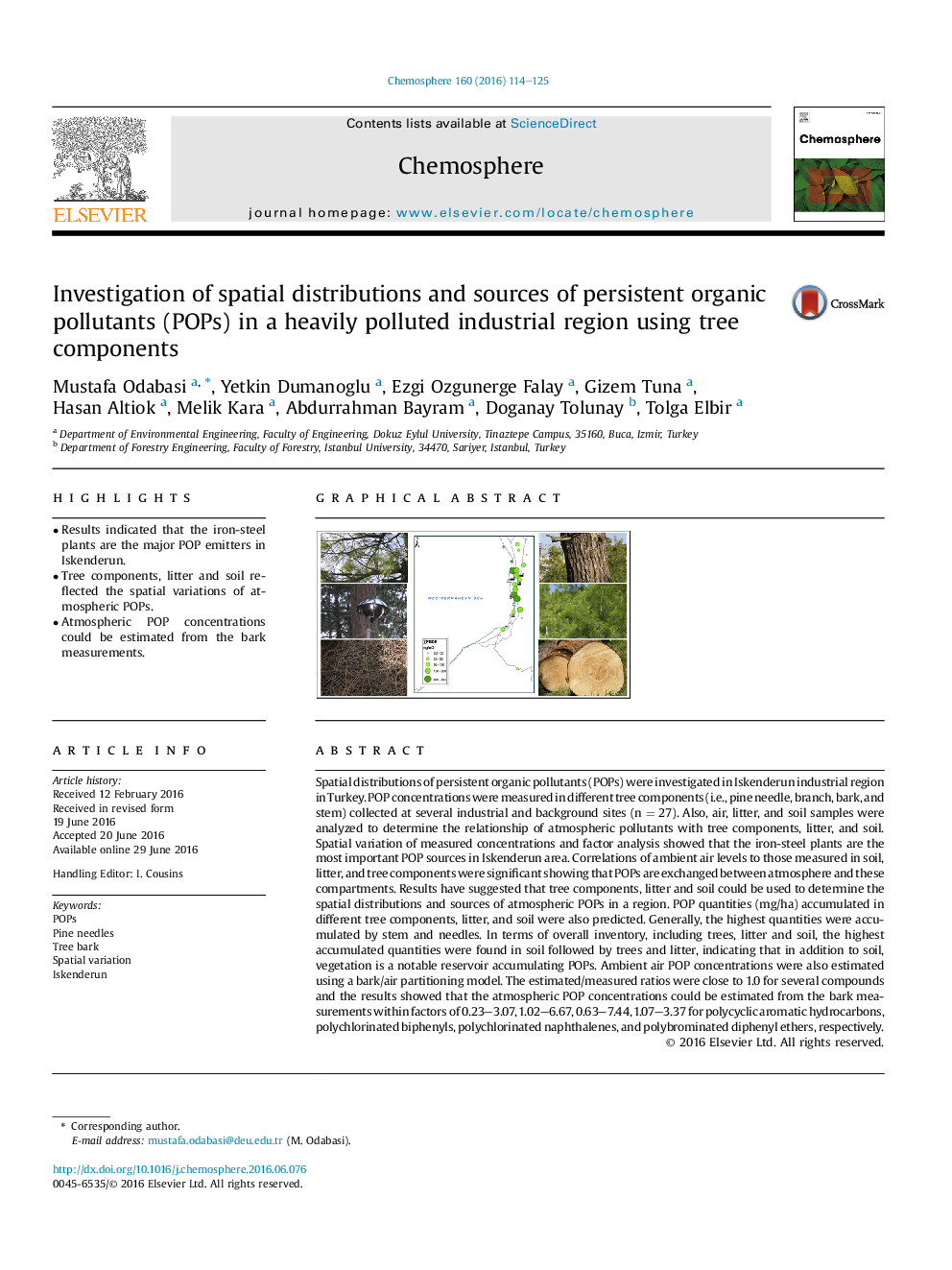| کد مقاله | کد نشریه | سال انتشار | مقاله انگلیسی | نسخه تمام متن |
|---|---|---|---|---|
| 4407364 | 1618811 | 2016 | 12 صفحه PDF | دانلود رایگان |

• Results indicated that the iron-steel plants are the major POP emitters in Iskenderun.
• Tree components, litter and soil reflected the spatial variations of atmospheric POPs.
• Atmospheric POP concentrations could be estimated from the bark measurements.
Spatial distributions of persistent organic pollutants (POPs) were investigated in Iskenderun industrial region in Turkey. POP concentrations were measured in different tree components (i.e., pine needle, branch, bark, and stem) collected at several industrial and background sites (n = 27). Also, air, litter, and soil samples were analyzed to determine the relationship of atmospheric pollutants with tree components, litter, and soil. Spatial variation of measured concentrations and factor analysis showed that the iron-steel plants are the most important POP sources in Iskenderun area. Correlations of ambient air levels to those measured in soil, litter, and tree components were significant showing that POPs are exchanged between atmosphere and these compartments. Results have suggested that tree components, litter and soil could be used to determine the spatial distributions and sources of atmospheric POPs in a region. POP quantities (mg/ha) accumulated in different tree components, litter, and soil were also predicted. Generally, the highest quantities were accumulated by stem and needles. In terms of overall inventory, including trees, litter and soil, the highest accumulated quantities were found in soil followed by trees and litter, indicating that in addition to soil, vegetation is a notable reservoir accumulating POPs. Ambient air POP concentrations were also estimated using a bark/air partitioning model. The estimated/measured ratios were close to 1.0 for several compounds and the results showed that the atmospheric POP concentrations could be estimated from the bark measurements within factors of 0.23–3.07, 1.02–6.67, 0.63–7.44, 1.07–3.37 for polycyclic aromatic hydrocarbons, polychlorinated biphenyls, polychlorinated naphthalenes, and polybrominated diphenyl ethers, respectively.
Figure optionsDownload as PowerPoint slide
Journal: Chemosphere - Volume 160, October 2016, Pages 114–125